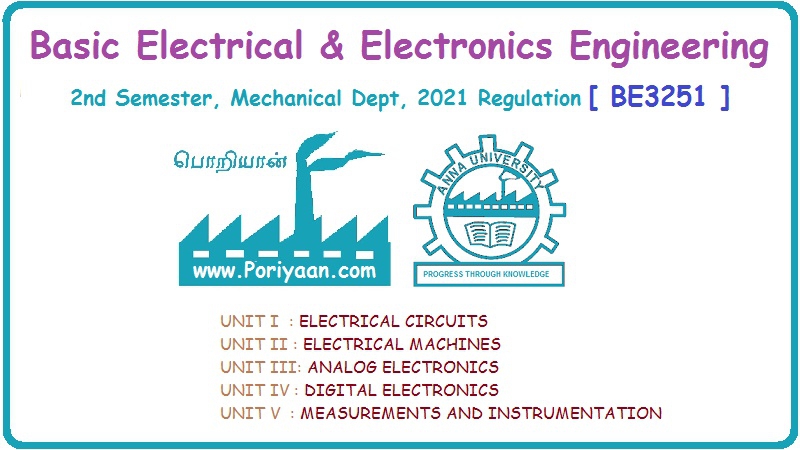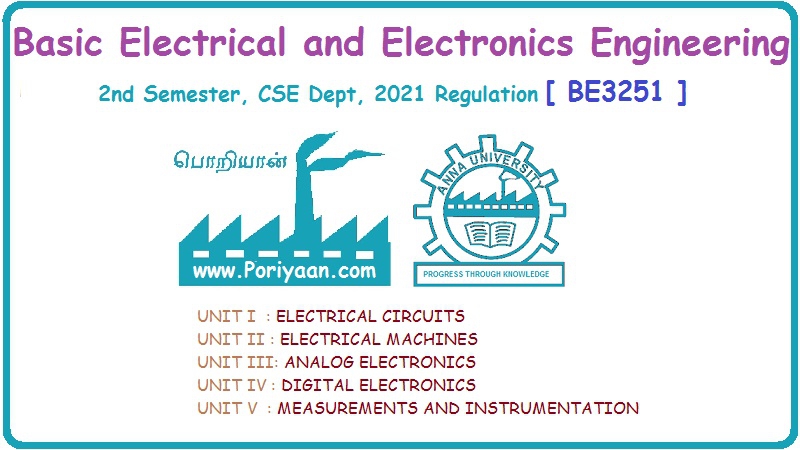Basic Electrical and Electronics Engineering: Unit III: Analog Electronics
Bipolar Junction Transistor (BJT) Currents
with Solved Example Problems
The direction of a conventional current is always opposite to the electron current in any electronic device.
BIPOLAR JUNCTION TRANSISTOR CURRENTS
The direction of a conventional current is always opposite to the electron current in any electronic device.
Therefore the conventional currents in a NPN transistor are shown in fig.3.43(a). However, the direction of a conventional current is the same as that of a hole current in a PNP transistor and is as shown in fig.3.43(b). In this figure, IE denotes the emitter current, IB is the base current and IC is the collector current respectively.
The emitter current is the sum of the collector and base currents.
IE = IB + IC
Since the base current is very small, therefore
IE ≈ IC
Example: 3
In a common-base connection, a certain transistor has an emitter current of 10 mA and a collector current of 9.6 mA. Calculate the value of the base current.
Solution:
IE = 10 mA, IC = = 9.6 mA
IE = IC + IB
10 mA = 9.6 mA + IB
IB = 10 - 9.6
IB = 0.4 mA
Example: 4
The base current of a transistor is 30 μA and the emitter current is 7.2 mA. What is the value of collector current?
Solution:
IE = 7.2 × 10-3
IB = 30 × 10-6
IE =IC + IB
IC = 7.2 × 10-3- 30 × 10-6
IC = 7.17 mA
Example: 5
Following current readings are obtained for transistor circuit IE = 2 mA and IB = 20 μA. Compute the value of IC.
Solution:
IC = IE - IB
= 2 × 10-3 - 20 × 10-6
IC = 1.98 mA
Basic Electrical and Electronics Engineering: Unit III: Analog Electronics : Tag: : with Solved Example Problems - Bipolar Junction Transistor (BJT) Currents
Related Topics
Related Subjects
Basic Electrical and Electronics Engineering
BE3251 2nd semester Mechanical Dept | 2021 Regulation | 2nd Semester Mechanical Dept 2021 Regulation
Basic Electrical and Electronics Engineering
BE3251 2nd Semester CSE Dept 2021 | Regulation | 2nd Semester CSE Dept 2021 Regulation

